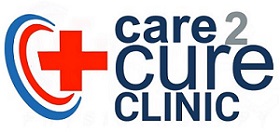
Dry needling therapy is a type of physical therapy developed by contemporary practitioners of Western medicine. Dry needling treats muscular pain with the insertion of very thin and fine (filoform) stainless steel needles into well-defined points within the affected muscle. This precise intramuscular stimulation can be very effective in promoting healing, relieving pain, and improving range of motion, all without the use of drugs or medication.
This type of therapy may be particularly attractive for patients who are sensitive to pain medication or for those whose pain levels have not improved even after multiple session of other physical therapy, rest, exercise, or surgery. Dry needling increasingly has been finding usage among patients with chronic conditions that have resulted in long-lasting pain.
Other names for dry needling therapy include:
- myofascial trigger point dry needling
- myofascial acupuncture
- tendinomuscular acupuncture
- sports acupuncture
Different sports injuries produce different symptoms and complications. The most common types of sports injuries include:
- Sprains. Overstretching or tearing the ligaments results in a sprain. Ligaments are pieces of tissue that connect two bones to one another in a joint.
- Strains. Overstretching or tearing muscles or tendons results in a sprain. Tendons are thick, fibrous cords of tissue that connect bone to muscle. Strains are commonly mistaken for sprains. Here’s how tell them apart.
- Knee injuries. Any injury that interferes with how the knee joint moves could be a sports injury. It could range from an overstretch to a tear in the muscles or tissues in the knee.
- Swollen muscles. Swelling is a natural reaction to an injury. Swollen muscles may also be painful and weak.
- Achilles tendon rupture. The Achilles tendon is a thin, powerful tendon at the back of your ankle. During sports, this tendon can break or rupture. When it does, you may experience sudden, severe pain and difficulty walking.
- Fractures. Bone fractures are also known as broken bones.
- Dislocations. Sports injuries may dislocate a bone in your body. When that happens, a bone is forced out of its socket. This can be painful and lead to swelling and weakness.
- Rotator cuff injury. Four pieces of muscle work together to form the rotator cuff. The rotator cuff keeps your shoulder moving in all directions. A tear in any of these muscles can weaken the rotator cuff.
